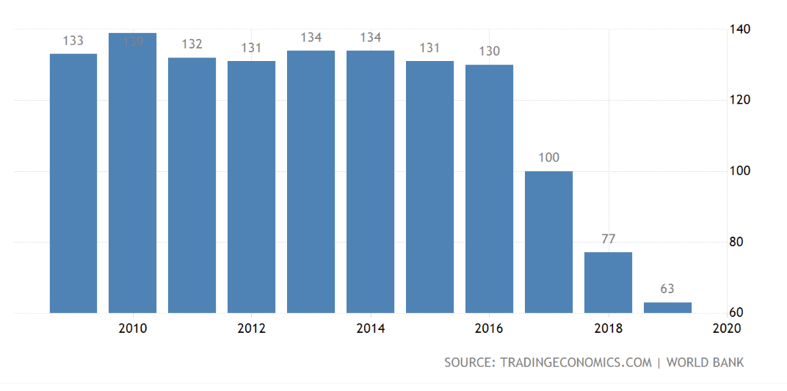
In this article, the second in a two-part series (Link to Part 1) on student housing in India, current challenges to the industry are examined. The scope is limited to legal and investment challenges that may be encountered by developers, operators, and investors of student housing in India. Since formal student housing is in its nascent stages in the country, the biggest challenge that the sector faces is to be recognized as a separate asset class.
In order to establish an effective rental ecosystem, the Indian government recently announced the draft Model Tenancy Act, 2019 (the “Act”), which creates a legal framework to regulate the rental housing sector and define the responsibilities and rights of landlords and tenants. The Act proposes a ceiling on the security deposit of two months’ rent for a residential property (Ministry of Housing and Urban Affairs, 2019). Currently, landlords generally demand 3 months (in Delhi) to 11 months (in Bangalore) of rent as a security deposit (Legal Desk, 2016), and the proposed provisions will come as a relief to tenants.
Furthermore, the Act also includes provisions regarding subleasing of rental units. The Act states that the tenant would have to obtain the prior consent of the landlord before subleasing the unit and also disclose the details of the subtenant to the landlord. For students that live in off-campus housing in the private sector, subleasing is an important aspect of student housing as it helps to cover the rent for the period when students are either on vacation or moving to different housing. Another important provision in the Act is the creation of rent courts/tribunals by State governments to provide a grievance redressal platform to both landlords and tenants. The creation of a regulatory body is also proposed. It remains to be seen which states will pursue this option vigorously.
According to JLL’s biennial Global Real Estate Transparency Index, India’s ranking improved from 50 in 2008 to 35 in 2018 (JLL, 2018). This was in part a result of positive changes to the legal landscape aimed at more formally regulating the highly unorganized real estate market in India. The ranking could improve if positive changes can be measured by the implementation of the Real Estate (Regulation and Development) Act, 2016 and the Prohibition of Benami Property Transactions Act, 2016, as well as the real estate sectoral alignment to the Goods and Services Tax. The student housing space in India saw $100 million of investment in 2018 (Knight Frank, 2019). Global funds and local developers such as Warburg Pincus, Sequoia Capital, and Goldman Sachs have either invested or firmed up their investment plans (EY, 2019). While there is scope for further foreign investment in student housing in India, there are several challenges that a developer and/or operator would have to overcome.

The biggest investment challenge faced by a foreign investor seeking to invest in a real estate project in India is finding the right entry strategy. Under the current Foreign Direct Investment (FDI) policy for real estate, a foreign investor can infuse funds in the country through a 100% direct investment via the automatic route (i.e. without prior government approval) in an Indian company incorporated under the Companies Act, 1956, through a joint venture or a wholly owned subsidiary. The investment can be made in “construction-development projects.”[1] Choosing the right entry strategy becomes critical to the success of the project as there are capital outlays and investment lock-in periods involved. As seen with most investments made in student housing, most foreign investors prefer to form a joint venture with a local Indian developer. Access to local knowledge, networks, and understanding of the law and the political scenario are some of the advantages that come with forming a joint venture with a local real estate developer.
Though India’s “ease of doing business” ranking improved significantly from 100 in 2017 to 63 in 2019, several legal and political challenges remain. Another challenge is dealing with the ever-evolving regulatory environment. The laws that come into force in India are drafted loosely and the regulations tend to be ambiguous. The regulators’ intentions in drafting a policy can differ from the written word and are open to interpretation. An example of the changing regulatory framework is evident from the changes in the FDI policy for the real estate sector. PN12 (2015) did away with the requirements of minimum floor area (20,000 sq. meters) and minimum capitalization (of $5 million) that was introduced under PN10(2015) of the FDI Policy. Requirements, such as those stipulating that the investor shall be permitted to exit only on completion of the project or after the development of trunk infrastructure, were also amended.
Currently, an investor can exit from the initial investment (each tranche is considered a separate phase) at the expiry of the lock in period of three years. This means that even if the project is incomplete, an investor can exit the project and repatriate its funds at the termination of three years from the investment date. This provision reduces the investment risk of a foreign investor significantly. An investor can also transfer their stake to a non-resident without having a lock-in restriction and without the prior approval of the government as long as the investment would not be repatriated. Liberalization of the FDI policy is an important step towards foreign investment, but an investor planning to venture into this sector needs to be cognizant of the changing regulatory interests and regulations. An investor should adopt conservative interpretations of the law that do not leave it vulnerable to later decisions by authorities that could jeopardize its business models. The table below highlights the current policies for FDI in real estate in India:

While challenges remain, the Model Tenancy Act, 2019, Real Estate (Regulation and Development) Act, 2016, Prohibition of Benami Property Transactions Act, 2016, and the general liberalization of the FDI policy are all positive steps taken by the government to structure and boost investment in the burgeoning residential real estate market in India. Foreign investors and international student housing players should study the Indian student housing opportunity and seize opportunities when they arise.
The positive steps that the government has taken to overhaul the legal framework directly affect the private sector’s attempts to provide student housing.
_____
[1] ‘Construction Development’ includes development of townships, construction of residential/commercial premises, roads or bridges, hotels, resorts, educational institutions, recreational facilities, city and regional level infrastructure and townships (Department for Promotion of Industry and Internal Trade, Ministry of Commerce & Industry, Government of India, 2019)
_____
References
Department for Promotion of Industry and Internal Trade, Ministry of Commerce & Industry, Government of India. (2019, September). FDI Policy. Retrieved from Invest India: https://static.investindia.gov.in/2019-09/FDI%20Policy%202019%20revised_19%20Sept%202019.pdf
EY. (2019). Real Estate Investments – Trends and Outlook. New Delhi: EY. Retrieved from https://invest-india-revamp-static-files.s3.ap-south-1.amazonaws.com/s3fs-public/2019-08/ey-real-estate-investments-trends-and-outlook.pdf
Global Property Guide. (2006, June). Global Property Guide. Retrieved from Global Property Guide: https://www.globalpropertyguide.com/Asia/India/Landlord-and-Tenant
JLL. (2018). Global Real Estate Transparency Index. Retrieved from https://www.us.jll.com/content/dam/jll-com/documents/pdf/research/global/JLL%20Transparency%20Report%202018%20FINAL.pdf
Knight Frank. (2019, May). Global Student Property Report 2019. Retrieved from Knight Frank: https://content.knightfrank.com/research/1775/documents/en/global-student-property-report-2019-may-2019-6426.pdf
Legal Desk. (2016). Rental Agreement. Retrieved from Legal Desk: https://legaldesk.com/rental-agreement/must-know-facts-security-deposit
Ministry of Housing and Urban Affairs. (2019). Draft Model Tenancy Act. Retrieved from Ministry of Housing and Urban Affairs: http://mohua.gov.in/upload/uploadfiles/files/Draft%20Model%20Tenancy%20Act%2C%202019(1).pdf
